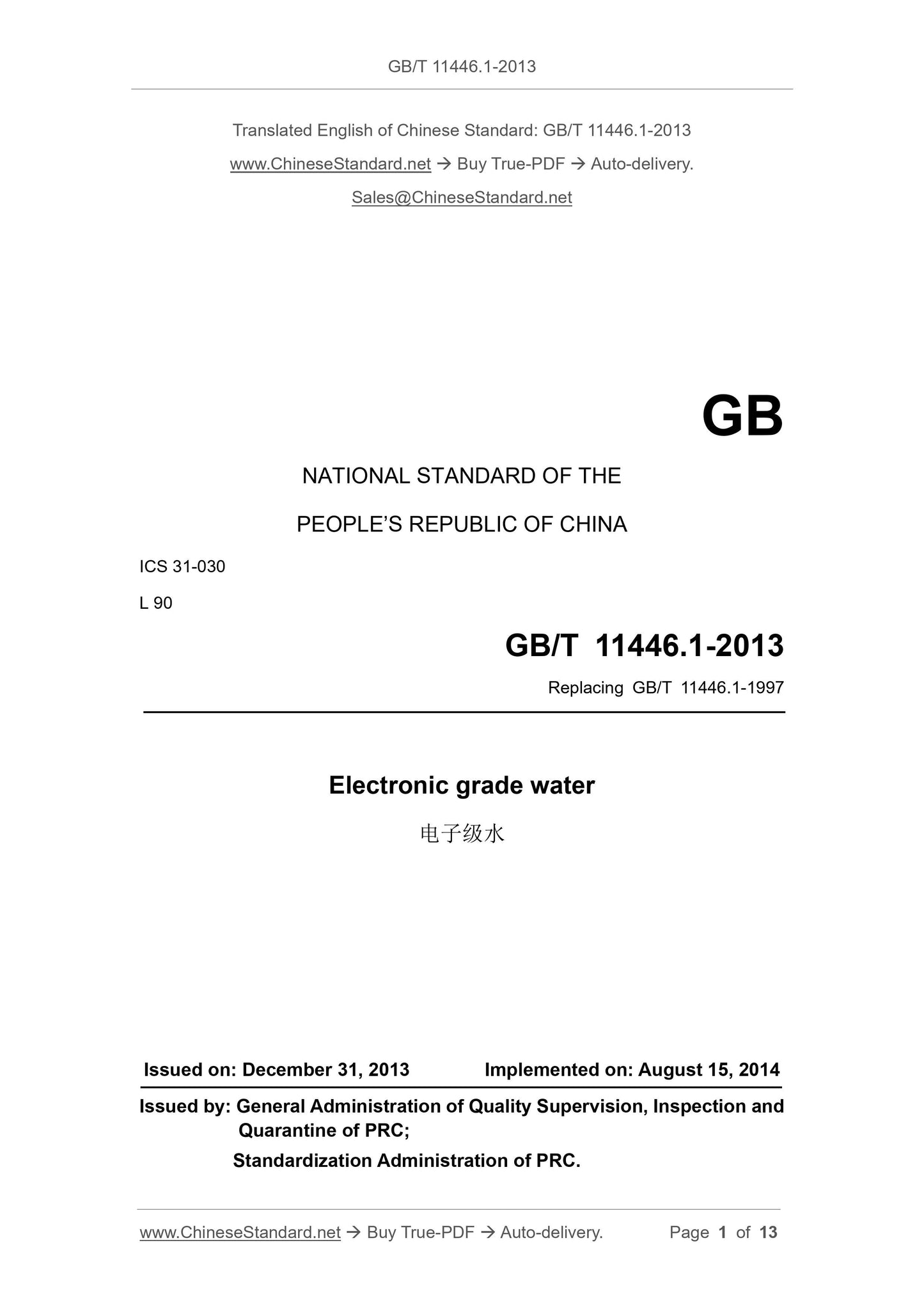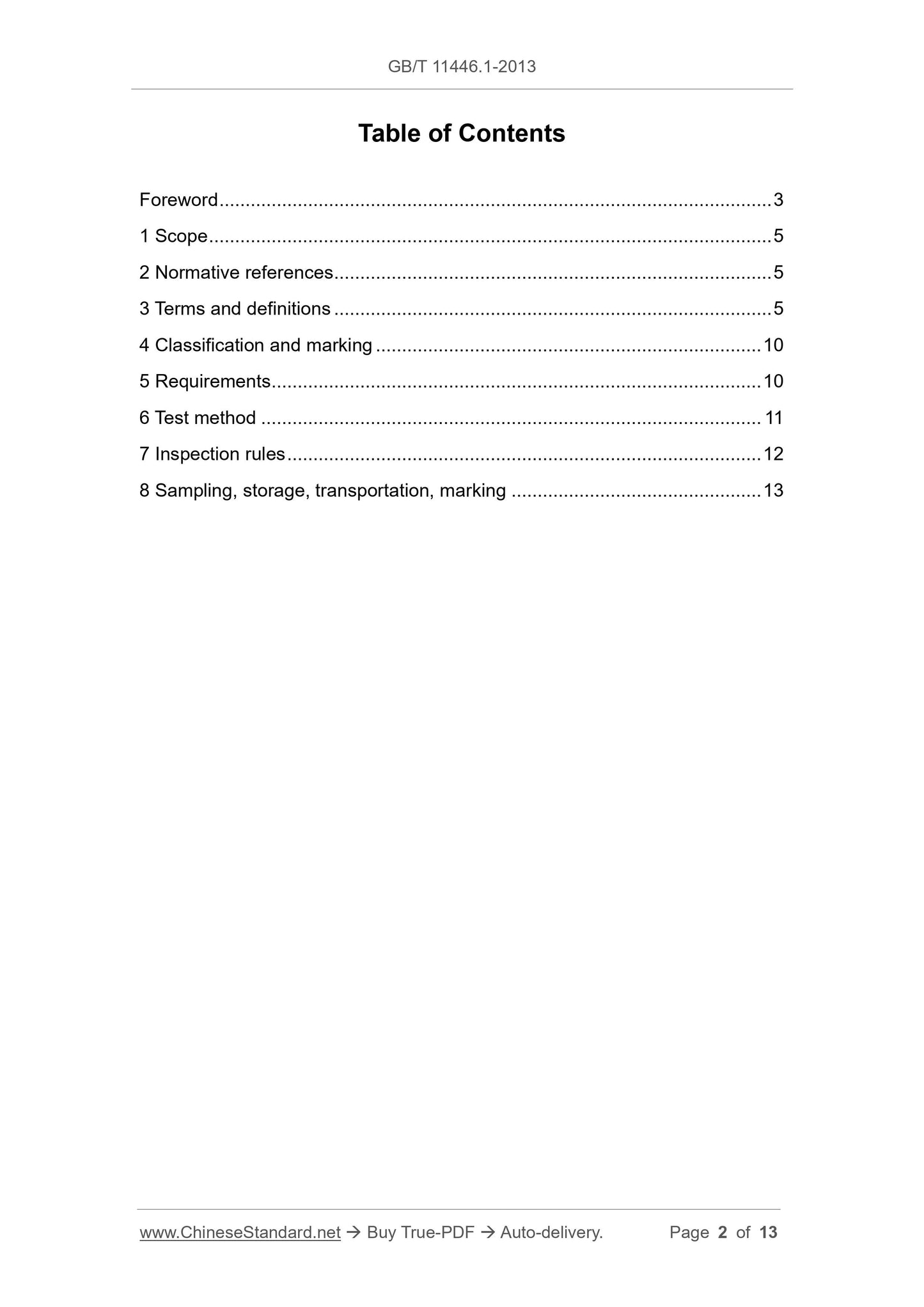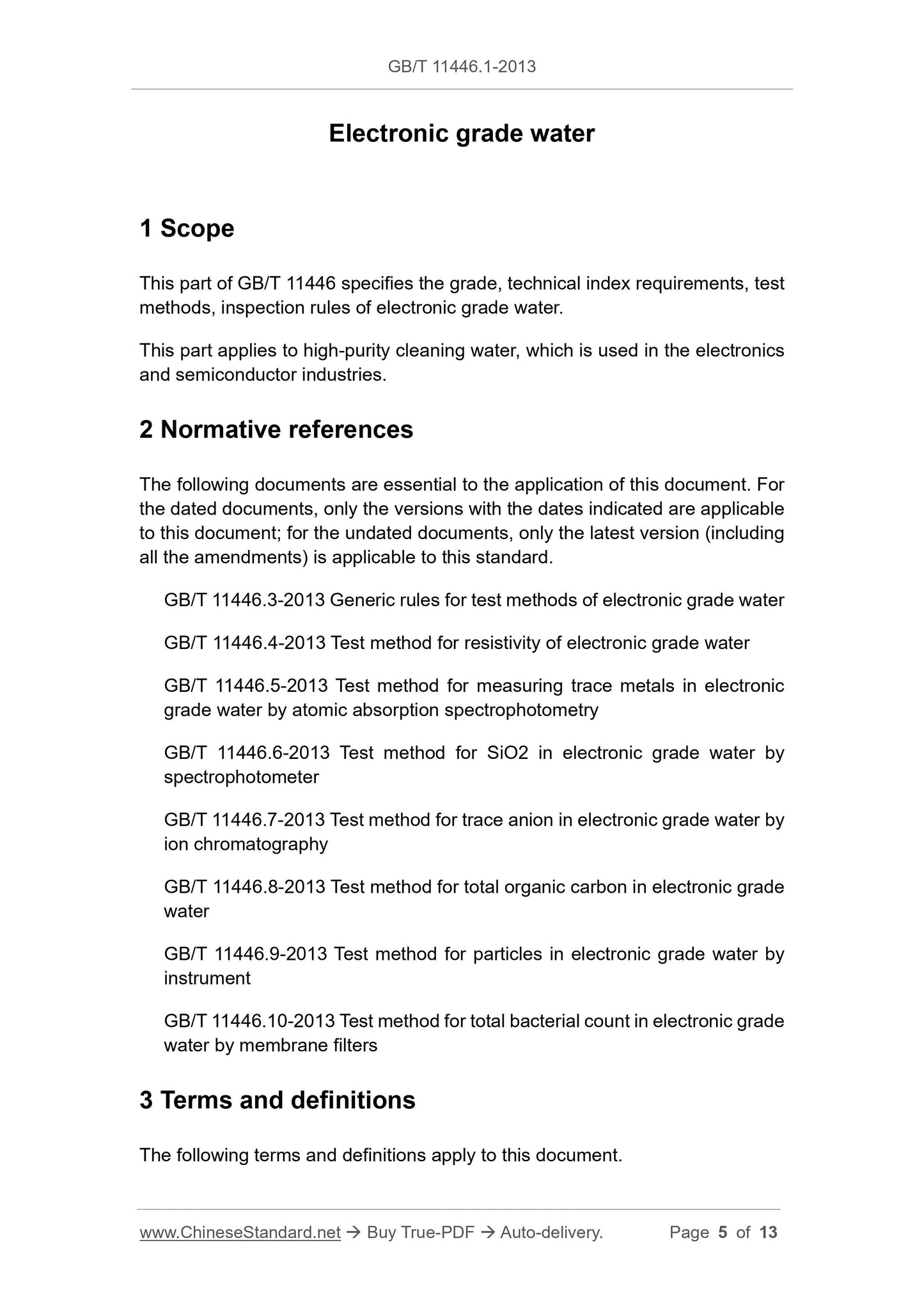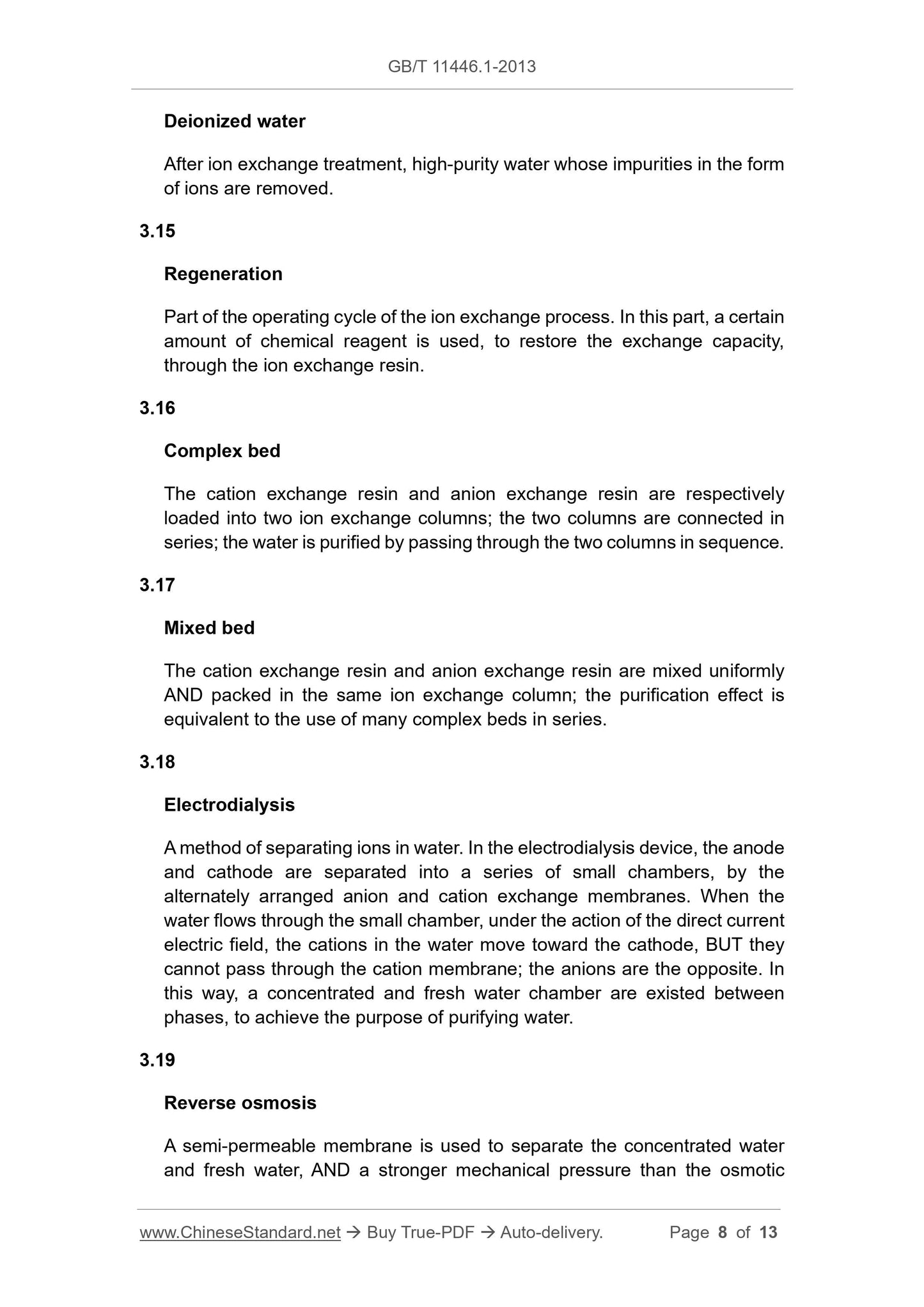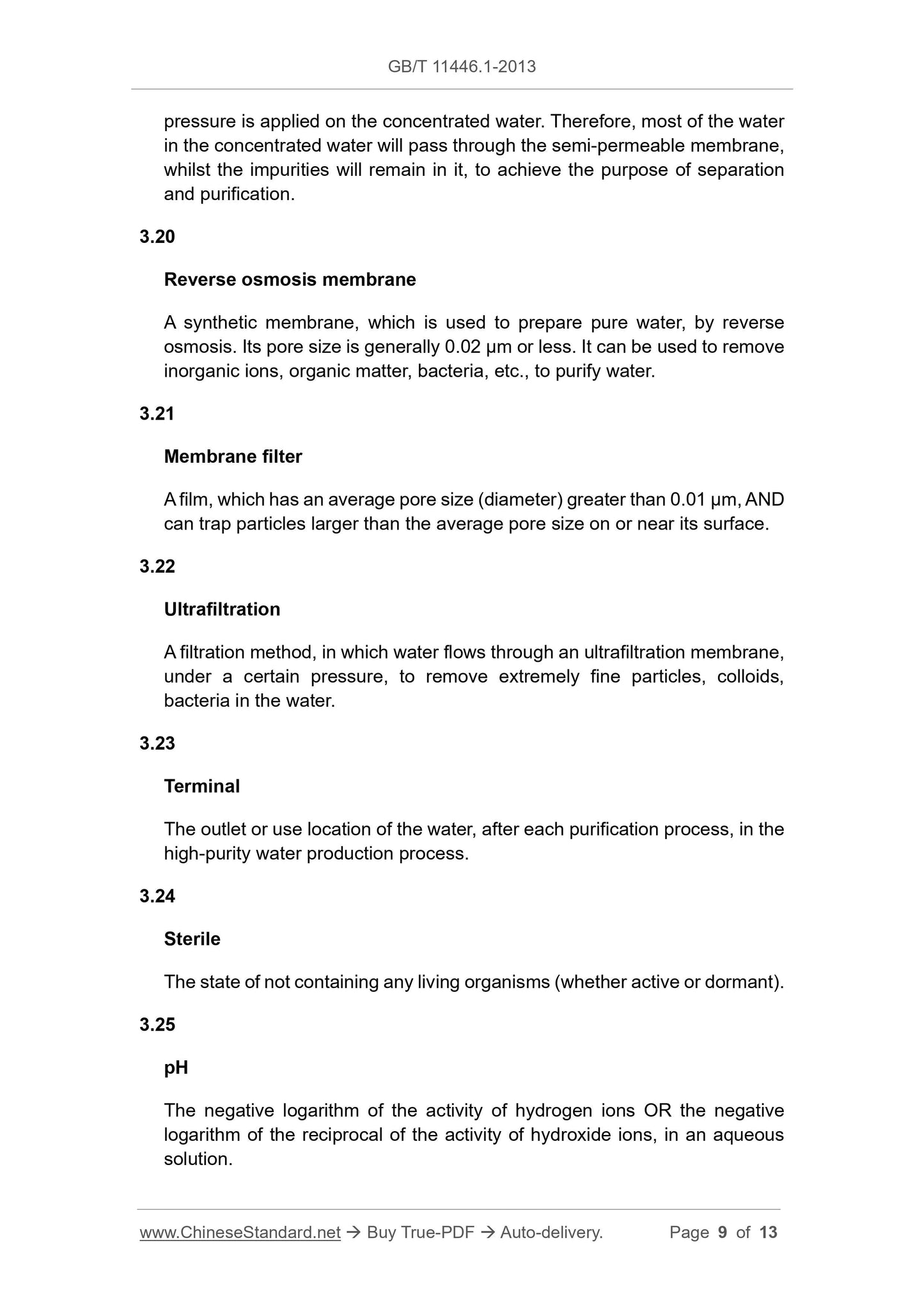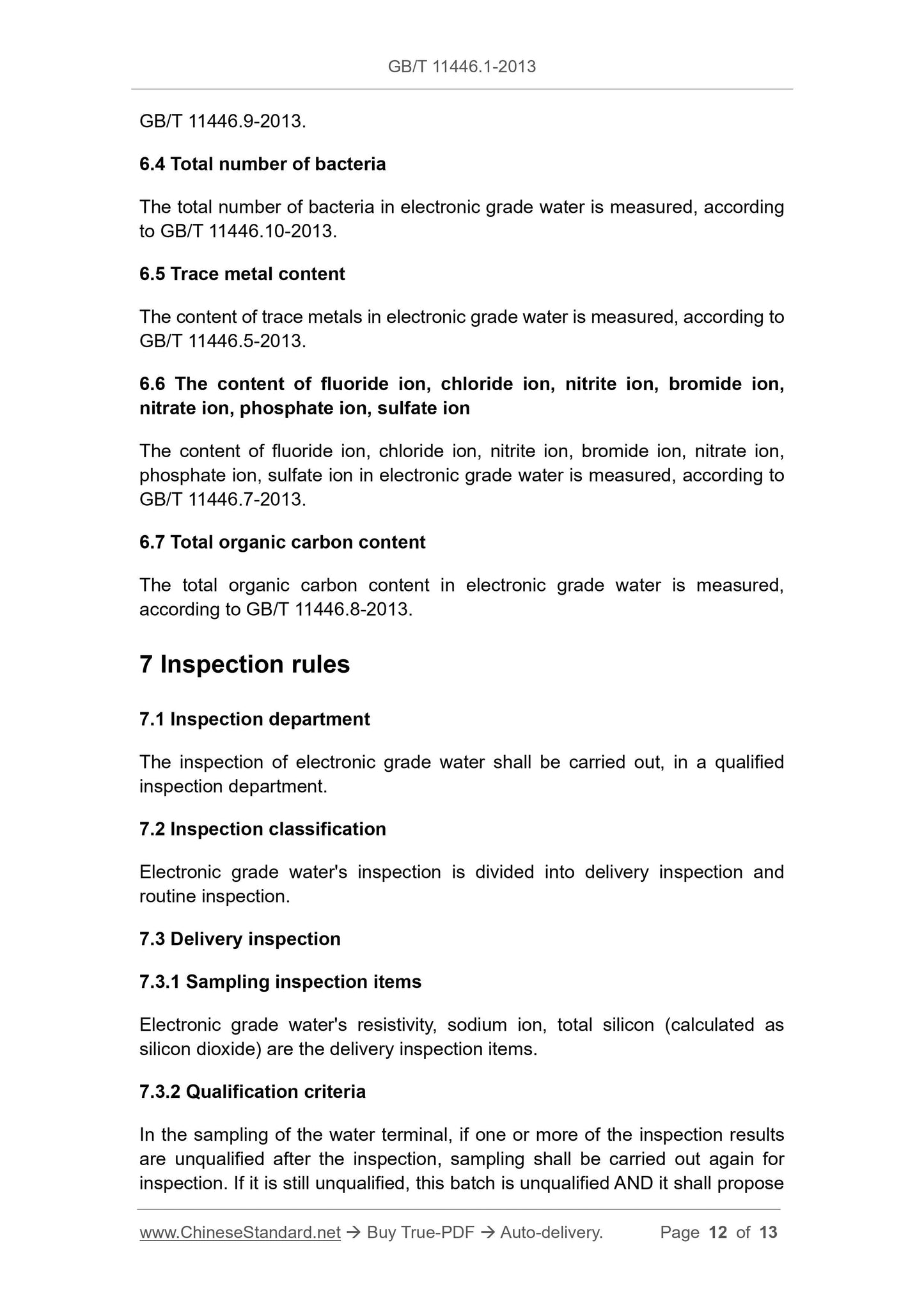1
/
of
6
www.ChineseStandard.us -- Field Test Asia Pte. Ltd.
GB/T 11446.1-2013 English PDF (GB/T11446.1-2013)
GB/T 11446.1-2013 English PDF (GB/T11446.1-2013)
Regular price
$170.00
Regular price
Sale price
$170.00
Unit price
/
per
Shipping calculated at checkout.
Couldn't load pickup availability
GB/T 11446.1-2013: Electronic grade water
Delivery: 9 seconds. Download (and Email) true-PDF + Invoice.Get Quotation: Click GB/T 11446.1-2013 (Self-service in 1-minute)
Newer / historical versions: GB/T 11446.1-2013
Preview True-PDF
Scope
This part of GB/T 11446 specifies the grade, technical index requirements, testmethods, inspection rules of electronic grade water.
This part applies to high-purity cleaning water, which is used in the electronics
and semiconductor industries.
Basic Data
| Standard ID | GB/T 11446.1-2013 (GB/T11446.1-2013) |
| Description (Translated English) | Electronic grade water |
| Sector / Industry | National Standard (Recommended) |
| Classification of Chinese Standard | L90 |
| Classification of International Standard | 31.030 |
| Word Count Estimation | 9,980 |
| Older Standard (superseded by this standard) | GB/T 11446.1-1997 |
| Quoted Standard | GB/T 11446.3-2013; GB/T 11446.4-2013; GB/T 11446.5-2013; GB/T 11446.6-2013; GB/T 11446.7-2013; GB/T 11446.8-2013; GB/T 11446.9-2013; GB/T 11446.10-2013 |
| Regulation (derived from) | National Standards Bulletin 2013 No. 27 |
| Issuing agency(ies) | General Administration of Quality Supervision, Inspection and Quarantine of the People's Republic of China, Standardization Administration of the People's Republic of China |
| Summary | This standard specifies the level of electronic-grade water, technical requirements, test methods and inspection rules. This standard applies to the electronics and semiconductor industries with high-purity water for cleaning. |
Share
